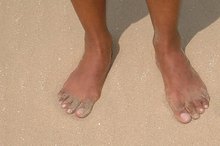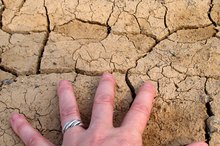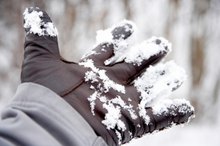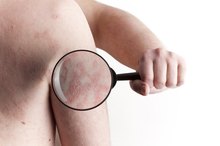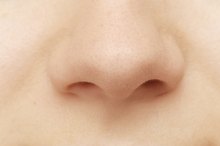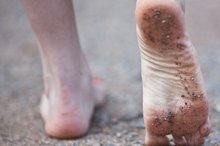What does fact checked mean?
At Healthfully, we strive to deliver objective content that is accurate and up-to-date. Our team periodically reviews articles in order to ensure content quality. The sources cited below consist of evidence from peer-reviewed journals, prominent medical organizations, academic associations, and government data.
The information contained on this site is for informational purposes only, and should not be used as a substitute for the advice of a professional health care provider. Please check with the appropriate physician regarding health questions and concerns. Although we strive to deliver accurate and up-to-date information, no guarantee to that effect is made.
What Are the Treatments for Dry Flaky Skin on Lower Legs?
It’s not unusual for skin on your lower legs to be dry and flaky. The degree of dryness comes down to factors such as your age, your lifestyle, or a medical condition, explains the Mayo Clinic. While dry skin tends to be more of a problem in winter, it can persist year round. Still, if you have the right skin care regimen, you won’t have to hide your legs away in shorts and sandals season.
Gentle Washing Routine
To relieve dryness on your lower legs—and prevent it in future—avoid using hot water and harsh chemicals to shower or bathe. They strip your skin of its natural lipid barriers and moisture, states the Mayo Clinic 1. Instead, lukewarm water and mild liquid cleansers or soaps help to reduce skin damage. Also, bathing less frequently may improve dryness and scaling.
- To relieve dryness on your lower legs—and prevent it in future—avoid using hot water and harsh chemicals to shower or bathe.
Moisturizing Creams and Ointments
How to Fix Cracked Heels
Learn More
Thick, greasy creams are moisturizing wonders for dry, flaking skin, unlike lotions which tend to contain alcohol and dry out your skin. For severe dryness and scales on your lower legs—which may also be caused by a genetic condition called ichthyosis vulgaris—creams with vitamin A, salicylic acid and urea can be very effective, according to the Merck Manuals Online Medical Library 4. After applying a moisturizer, you can apply petroleum jelly or a mineral oil to trap moisture. Moisturize right after your shower or bath when your skin is still a little damp, and at least one more time during the rest of the day.
- Thick, greasy creams are moisturizing wonders for dry, flaking skin, unlike lotions which tend to contain alcohol and dry out your skin.
- For severe dryness and scales on your lower legs—which may also be caused by a genetic condition called ichthyosis vulgaris—creams with vitamin A, salicylic acid and urea can be very effective, according to the Merck Manuals Online Medical Library 4.
Nightly Moisturizing Wrap
One of the best ways to trap moisture in your lower legs is to use a technique called “under occlusion,” according to the BC Food and Ankle Clinic. It’s a practice usually recommended for skin conditions such as psoriasis. These wraps are quite simple to do and involve applying an ointment-based moisturizer to your legs and wrapping them overnight in plastic wrap. To keep the wrap in place, wear a pair of socks. In the morning remove the wrap and bathe or shower as usual and slough away dead skin cells, advises the Mayo Clinic 1. Also, speak to your doctor about the best type of cream to use for “under occlusion” treatments.
- One of the best ways to trap moisture in your lower legs is to use a technique called “under occlusion,” according to the BC Food and Ankle Clinic.
Lifestyle Changes
How to Treat Cracked Skin on the Hands
Learn More
Winter’s crisp air and air conditioning can exacerbate dryness and flaking on your lower legs, but a humidifier helps to moisten the air. Also, leggings and socks also remove oils and moisture from your skin, so you should take them off as much as possible. Less sunbathing or using sunscreen when you’re outdoors, and not swimming in chlorinated pools will also help. If you develop a rash, bleeding, sores or these home remedies don’t relieve your dry, flaking skin, consult your doctor. You may have a more serious health problem such as diabetes or psoriasis.
- Winter’s crisp air and air conditioning can exacerbate dryness and flaking on your lower legs, but a humidifier helps to moisten the air.
Related Articles
References
Writer Bio
Kay Uzoma has been writing professionally since 1999. Her work has appeared in "Reader’s Digest," "Balance," pharmaceutical and natural health newsletters and on websites such as QualityHealth.com. She is a former editor for a national Canadian magazine and holds a Bachelor of Arts in political science from York University.
